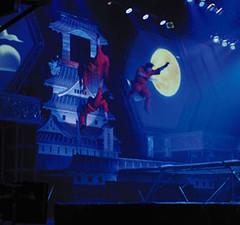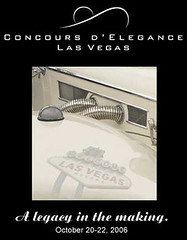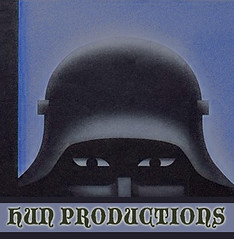Just a few weeks before Matsuri, the number one show in Japan, would perform a limited engagement at the Riviera Hotel and Casino in Las Vegas, we received a call from veteran show promoter and marketing director Jim Hoke. He needed public relations support and needed it fast.
Given the timing of the show, less than four weeks away, we quickly established two primary objectives that would drive Matsuri's media relations efforts: to create a consistent message that maximized earned media exposure in the local and national market (in order to reinforce the caliber of the show and increase ticket sales). And, to generate enough excitement about the show that a comparable or better venue would offer it an indefinite or long-term home in Las Vegas at the discretion of the producers.
To accomplish these objectives, we began by evaluating all existing communication material and then developed backgrounders, show descriptions, and a news release for the show's opening, knowing that some publications require up to four weeks prior to press time. The turn time was less than 48 hours.
After the initial rush, we shifted gears to build a low-cost, but effective media kit that included: a cast listing, fact sheet, show listing, photo call sheet, and supporting releases. One focused on two world cup winners in the show; another featured its uniqueness as the the first musical production to have ever originated in Japan.
As I've mentioned in previous posts, we spend ample time considering the contrast between one product and another. Let's face it. There are hundreds of shows in Las Vegas so patrons needed a good reason to go to this one, an afternoon show with ticket prices starting at around $60.
Overall, we concluded that the combination of extreme sports and the glimpse into Japanese culture was the best draw for American audiences. (The opposite holds true in Japan; they prefer American undertones). The results speak for themselves. The show quickly dominated the media, including Google searches, and became the city's best attended afternoon production, with an overall attendance average that outpaced any expectations.
While I won't share the entire media strategy, I will say that our solution proved two things: you don't need a huge budget or several months to develop an effective communication/media relations plan. At the end of the day, if you have a good product, all you really need is a solid message, sound strategy, and some media savvy.
In fact, the communication strategy we implemented achieved another goal. Matsuri will be back in Las Vegas this fall. It seems one major property has already anted up at least one offer.
We hope the fine folks at Matsuri take it. Our company enjoyed working with a Japanese-owned company. While it's not our first time (we've also worked with companies like Konami), it's always a good time.
Given the timing of the show, less than four weeks away, we quickly established two primary objectives that would drive Matsuri's media relations efforts: to create a consistent message that maximized earned media exposure in the local and national market (in order to reinforce the caliber of the show and increase ticket sales). And, to generate enough excitement about the show that a comparable or better venue would offer it an indefinite or long-term home in Las Vegas at the discretion of the producers.
To accomplish these objectives, we began by evaluating all existing communication material and then developed backgrounders, show descriptions, and a news release for the show's opening, knowing that some publications require up to four weeks prior to press time. The turn time was less than 48 hours.
After the initial rush, we shifted gears to build a low-cost, but effective media kit that included: a cast listing, fact sheet, show listing, photo call sheet, and supporting releases. One focused on two world cup winners in the show; another featured its uniqueness as the the first musical production to have ever originated in Japan.
As I've mentioned in previous posts, we spend ample time considering the contrast between one product and another. Let's face it. There are hundreds of shows in Las Vegas so patrons needed a good reason to go to this one, an afternoon show with ticket prices starting at around $60.
Overall, we concluded that the combination of extreme sports and the glimpse into Japanese culture was the best draw for American audiences. (The opposite holds true in Japan; they prefer American undertones). The results speak for themselves. The show quickly dominated the media, including Google searches, and became the city's best attended afternoon production, with an overall attendance average that outpaced any expectations.
While I won't share the entire media strategy, I will say that our solution proved two things: you don't need a huge budget or several months to develop an effective communication/media relations plan. At the end of the day, if you have a good product, all you really need is a solid message, sound strategy, and some media savvy.
In fact, the communication strategy we implemented achieved another goal. Matsuri will be back in Las Vegas this fall. It seems one major property has already anted up at least one offer.
We hope the fine folks at Matsuri take it. Our company enjoyed working with a Japanese-owned company. While it's not our first time (we've also worked with companies like Konami), it's always a good time.



















